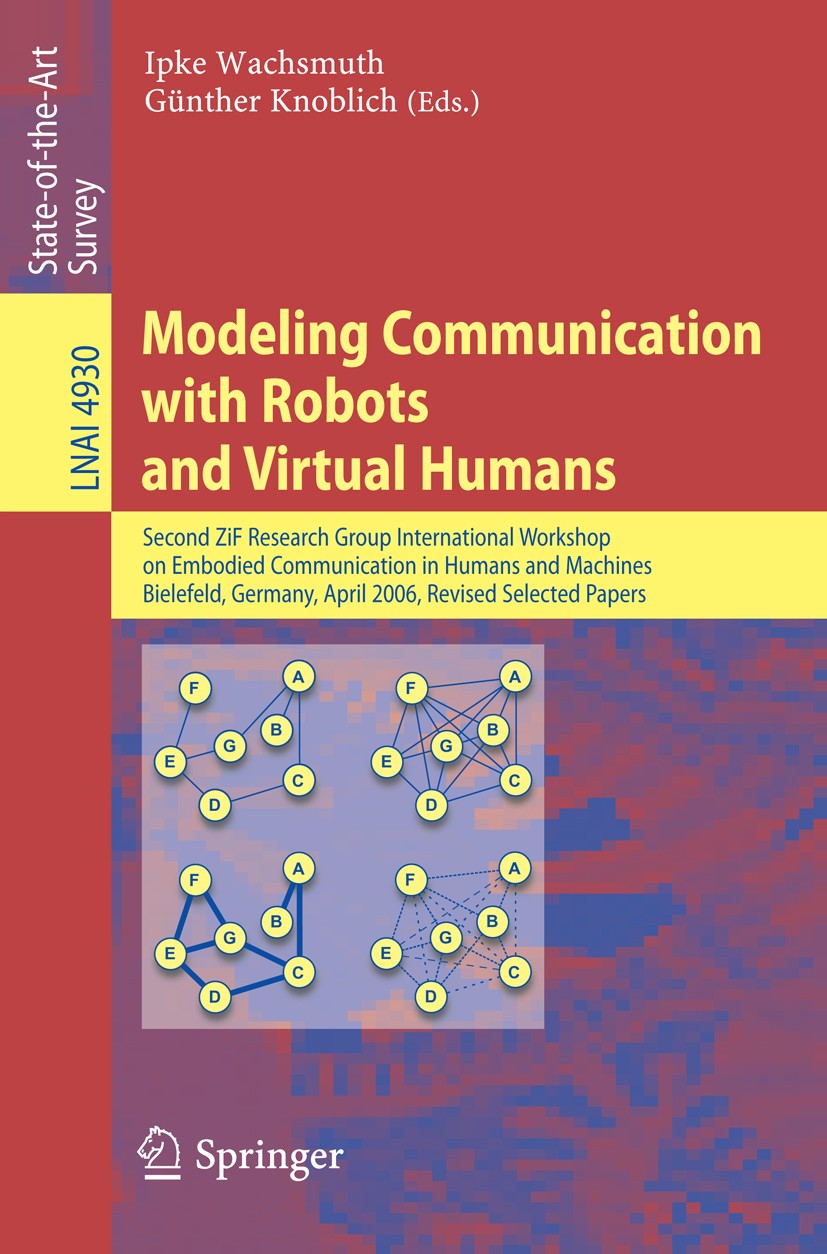| 書目名稱 | Modeling Communication with Robots and Virtual Humans |
| 副標(biāo)題 | Second ZiF Research |
| 編輯 | Ipke Wachsmuth,Günther Knoblich |
| 視頻video | http://file.papertrans.cn/636/635944/635944.mp4 |
| 叢書名稱 | Lecture Notes in Computer Science |
| 圖書封面 |  |
| 描述 | Embodied agents play an increasingly important role in cognitive interaction technology. The two main types of embodied agents are virtual humans inhabiting simulated environments and humanoid robots inhabiting the real world. So far research on embodied communicative agents has mainly explored their potential for practical applications. However, the design of communicative artificial agents can also be of great heuristic value for the scientific study of communication. It allows researchers to isolate, implement, and test essential properties of inter-agent communications in operational models. Modeling communication with robots and virtual humans thus involves the vision of using communicative machines as research tools. Artificial systems that reproduce certain aspects of natural, multimodal communication help to elucidate the internal mechanisms that give rise to different aspects of communication. In short, constructing embodied agents who are able to communicate may help us to understand the principles of human communication. As a comprehensive theme, “Embodied Communication in Humans and Machines” was taken up by an international research group hosted by Bielefeld University |
| 出版日期 | Conference proceedings 2008 |
| 關(guān)鍵詞 | Embodied Cognition; agents; artificial intelligence; cognition; communication; complex system; emotion; evo |
| 版次 | 1 |
| doi | https://doi.org/10.1007/978-3-540-79037-2 |
| isbn_softcover | 978-3-540-79036-5 |
| isbn_ebook | 978-3-540-79037-2Series ISSN 0302-9743 Series E-ISSN 1611-3349 |
| issn_series | 0302-9743 |
| copyright | Springer-Verlag Berlin Heidelberg 2008 |
 |Archiver|手機版|小黑屋|
派博傳思國際
( 京公網(wǎng)安備110108008328)
GMT+8, 2025-10-5 18:27
|Archiver|手機版|小黑屋|
派博傳思國際
( 京公網(wǎng)安備110108008328)
GMT+8, 2025-10-5 18:27


